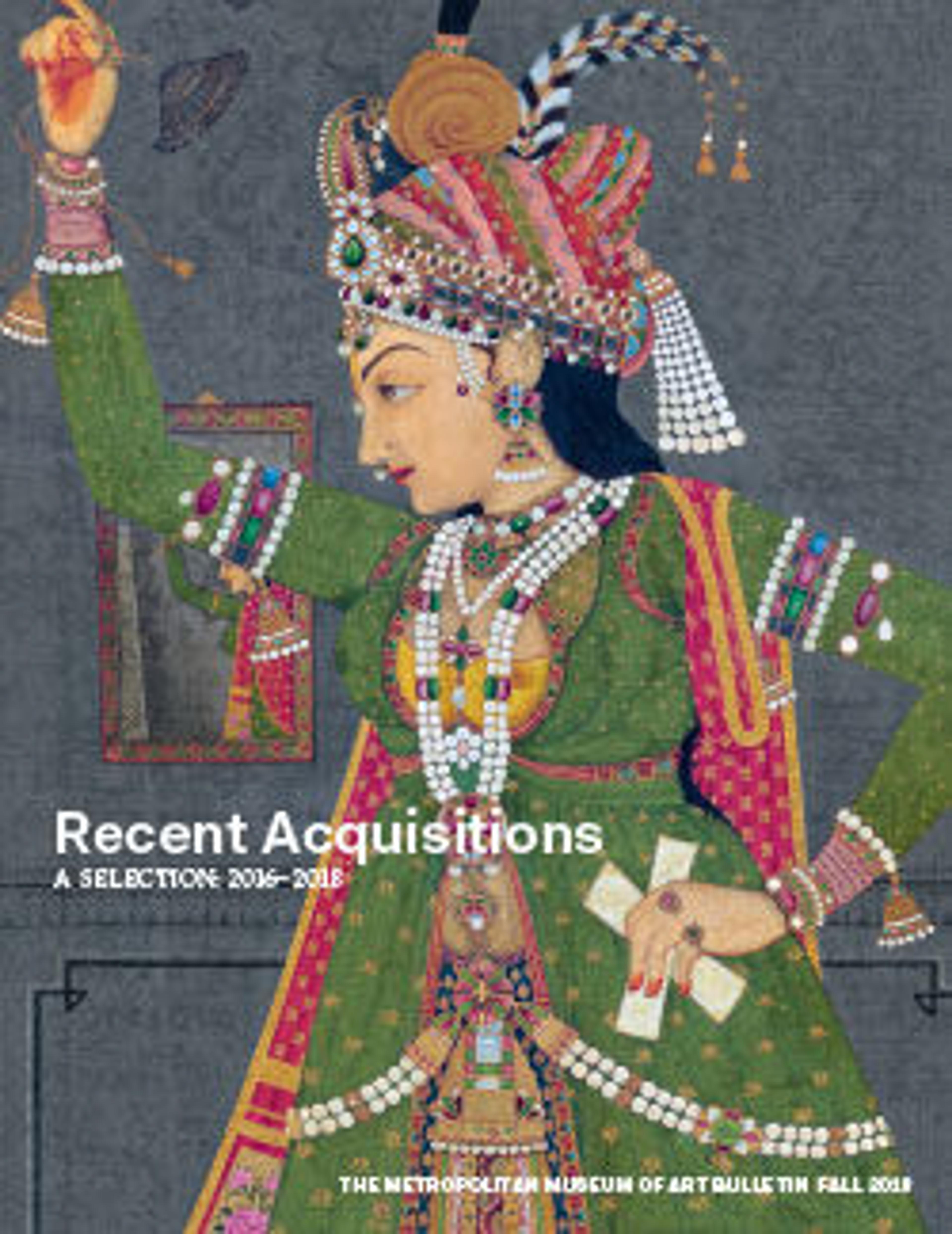Bound Manuscript of Hadith with Persian Translations by Jami
Shah Mahmud Nishapuri, one of the leading calligraphers at the court of Shah Tahmasp (reigned 1524–76), copied this manuscript of Hadith (traditions) of the Prophet Muhammad with a Persian translation by the poet Jami (1414–1492). The manuscript consists of seven folios of nasta'liq writing with an illuminated heading ('unwan) and an introduction in Persian. The body of the text contains illuminated corner pieces and bands of floriated vine scrolls separating lines of Arabic script from lines of Persian translation written diagonally. The colophon states that Shah Mahmud Nishapuri copied the manuscript in "dar al-sultana Tabriz," the Safavid capital in A.H. 935/A.D. 1528. The writing is exquisite, and the care with which the manuscript is laid out and illuminated reflects the high level of patronage in Tahmasp's court. Shah Mahmud Nishapuri, known as Zarinqalam, or "golden pen", served Tahmasp until 1557, when he moved to Mashhad; he remained there until his death, at the age of eighty, in 972/1564–65. The binding, with its design elements in pronounced relief and red-dyed leather, most likely dates to 75 to 100 years later than the manuscript, which would not be unusual because bindings were often reused.
Artwork Details
- Title: Bound Manuscript of Hadith with Persian Translations by Jami
- Calligrapher: Shah Mahmud Nishapuri (iranian, ca. 1486–1565)
- Date: Manuscript dated 935 AH/1528 CE; binding ca. 1575–1600
- Geography: Made in Iran
- Medium: Manuscript: Ink, opaque watercolor, and gold on paper
Binding: Leather, opaque watercolor, and gold - Dimensions: H. 11 1/4 in. (28.6 cm)
W. 7 1/2 in. (19.1 cm) - Classification: Codices
- Credit Line: Purchase, Friends of Islamic Art Gifts, 2017
- Object Number: 2017.368
- Curatorial Department: Islamic Art
More Artwork
Research Resources
The Met provides unparalleled resources for research and welcomes an international community of students and scholars. The Met's Open Access API is where creators and researchers can connect to the The Met collection. Open Access data and public domain images are available for unrestricted commercial and noncommercial use without permission or fee.
To request images under copyright and other restrictions, please use this Image Request form.
Feedback
We continue to research and examine historical and cultural context for objects in The Met collection. If you have comments or questions about this object record, please contact us using the form below. The Museum looks forward to receiving your comments.
